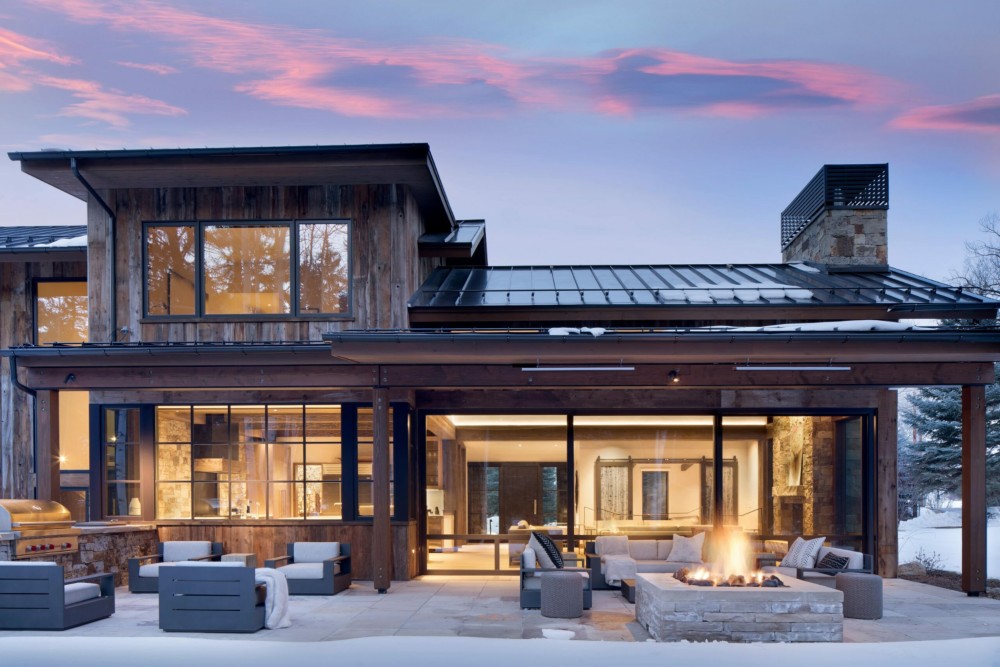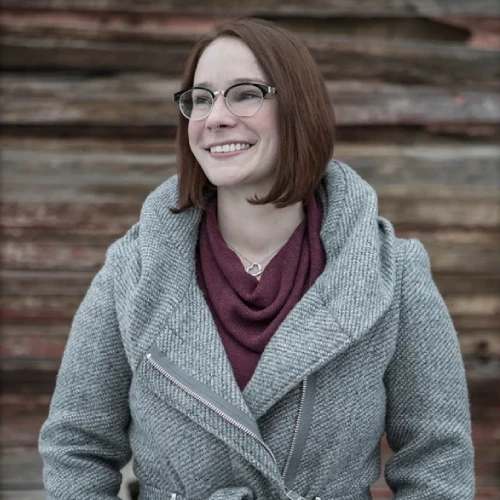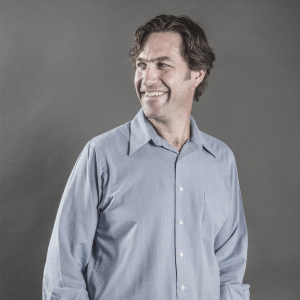Transforming any backyard into a culinary paradise begins with designing an exquisite outdoor kitchen. With thoughtful planning, friends and family gather, delicious meals are lovingly crafted, and memories are created under the open sky. This seamless extension of your living space is particularly well-suited for homes with ranch architecture, where indoor and outdoor living often blur beautifully. Whether you’re a seasoned chef or love to grill, an outdoor kitchen offers a unique blend of functionality and leisure. The sense of accomplishment you’ll feel after successfully designing your outdoor kitchen will be unparalleled.
Choosing the perfect layout, materials, and appliances is crucial for creating a space that suits your lifestyle and enhances your home’s value. From selecting weather-resistant countertops to ensuring ample storage and seating, every detail matters. Dive into the essentials of designing an outdoor kitchen that’s beautiful but also practical and enduring.
Planning Your Outdoor Kitchen
Designing an outdoor kitchen takes careful consideration. Starting with a solid plan helps ensure everything comes together perfectly.
Assessing Space and Location
First, assess the available space. Consider the size and shape of the backyard. A well-planned layout maximizes the area, leaving room for pathways, seating, and green spaces. If you have a large family or entertain often, you might need more counter space and extra seating.
Next, consider location. Place the outdoor kitchen near the house for easy access to utilities like gas, power, and water. The perfect design will also make serving food indoors and outdoors seamless. Avoid placing it too close to the neighbors to avoid smoke and noise complaints.
Setting a Budget
Establishing a budget is essential before starting to plan an outdoor kitchen. Decide how much money you will invest without stretching your finances too thin. High-end appliances and premium materials can significantly increase costs, but there are budget-friendly options that still offer durability and appeal.
Break down the expenses into categories:
- Appliances: Estimate costs for grills, refrigerators, and sinks.
- Materials: Include costs for countertops, cabinetry, and flooring.
- Utilities: Factor in the cost of running gas, water, and electricity.
- Furniture: Budget for seating, tables, and other furnishings.
Sticking to a budget helps avoid overspending and keeps the project on schedule. Prioritize must-haves and be open to adjusting non-essential items to maintain financial control. Planning well creates a smooth path toward building an outdoor kitchen you’ll love for years.
Designing the Layout
Designing the layout for an outdoor kitchen can transform backyard plans into a functional and inviting space. Considering the elements carefully ensures a seamless cooking and entertaining experience.
Choosing the Right Layout
Choosing a functional layout is crucial to your outdoor kitchen’s usability. Standard layout options include L-shaped, U-shaped, galley-style, and straight-line, designs. Each type serves different needs.
An L-shaped layout provides plenty of counter and storage space while keeping grill and prep zones close. U-shaped designs offer more surface area and can accommodate multiple cooks. Straight-line kitchens are great for smaller spaces, making them perfect for those with limited backyard space. Think about how you cook and entertain to decide which layout fits best.
Integrating Functional Zones
Integrating functional zones enhances efficiency and enjoyment. Divide the space into three key areas: preparation, cooking, and serving. The prep area includes counter space, ingredient containers, and utensil storage, ensuring everything a cook needs is within reach. The cooking zone comprises the grill, stovetop, and other available cookware and utensils, positioned for easy access from the prep area. Finally, the serving or dining zone should have seating and table space where guests can relax. This zoning ensures an organized flow, reducing chaos during gatherings.
Assigning specific functions to different areas optimizes workflow and keeps your outdoor kitchen looking tidy. It’s like having a game plan that works even when hosting a large party. With careful planning and thoughtful design, you’ll have a sense of control and organization that will make cooking and entertaining seamlessly enjoyable.

Selecting Materials and Appliances
Choosing suitable materials and appliances for an outdoor kitchen can transform a backyard into an inviting cooking hub. Style is not the only consideration; durability and functionality are also crucial.
Durable Materials for Outdoor Use
Outdoor kitchens are exposed to the elements daily, so opting for resilient exterior-rated materials ensures longevity. Stainless steel stands out due to its rust resistance and modern look. It’s perfect for cabinetry and appliances alike. Natural stone, like granite, makes an excellent choice for countertops as it withstands heat, rain, and cold. Natural stones and manufactured options require sealing every 2-3 years, depending on exposure to the elements. For flooring, consider using concrete pavers or natural stone, which provides durability and aesthetic appeal.
When selecting materials, think about maintenance. Composite decking, for example, mimics the look of wood, but it is far easier to clean and doesn’t require annual staining. Enclosing wood accents with weather-resistant sealants can also help maintain their beauty longer.
Choosing Appliances and Features
With materials sorted, turn attention to appliances and features. High-quality appliances, such as built-in grills, drink coolers, and retractable TVs, are an outdoor kitchen’s centerpiece to fit your needs. Go for reputable brands known for their reliability. Consider incorporating a smoker or pizza oven for added versatility.
An outdoor refrigerator keeps food and beverages easily accessible, avoiding constant trips indoors. Additionally, a sink with running water adds convenience to food prep, handwashing, and cleaning.
Storage solutions are a must. Weatherproof cabinets keep utensils and cookware safe and handy. Lighting is another crucial element; Hidden ambient and task lighting is necessary to ensure the space is usable day and night.
Weather conditions should guide appliance choices. Select items rated for outdoor use within your climate zone to ensure weatherproofing. Planning for shade with pergolas, retractable awnings, or umbrellas can enhance comfort and protect appliances from direct sun.
Focusing on durable materials and trustworthy appliances can help you design an outdoor kitchen that balances practicality with comfort, creating a space that’s perfect for entertaining in any season. The sense of comfort and convenience that comes with a well-designed outdoor kitchen is truly unparalleled.
Installation Tips
Successfully installing an outdoor kitchen requires careful planning and attention to detail. Here’s a guide to help you with the process.
Preparation and Safety Measures
Before installing, start with thorough preparation and prioritize safety. Plans for outdoor kitchens must include detailed measurements and a layout sketch. In some jurisdictions, you may need to file for a permit, particularly if your project involves large-scale modifications or gas, plumbing, or electrical work. Measure twice, and call your county to avoid costly mistakes. Incorporate safety measures, like an exterior gas shut-off, to ensure your outdoor space is both functional and secure.
Clear the area where the kitchen will be installed, removing debris or obstacles. Check the site for level ground; even slight slopes can cause installation issues. Installations often require proper drainage, so evaluate the drainage system. This prevents water from pooling around the kitchen.
Electrical and gas lines need careful consideration. Hire professionals to install these lines to avoid accidents. Ensure all connections meet local building codes. Don’t forget to check for permits before breaking ground. Securing permits can save you from legal hassles down the line.
Professional vs. DIY Installation
Depending on your skill level and budget, you can choose between professional installation and a DIY approach. Professional installation guarantees quality work, which minimizes long-term issues. Contractors come with expertise and tools and ensure everything is up to code.
While cost-effective, DIY installation demands patience and technical know-how. If opting for DIY, follow manufacturer instructions closely, especially for more complicated appliances like grills and smokers.
Mixing both approaches can also be effective. Consider hiring professionals for critical tasks like installing gas and electrical lines while you handle more straightforward tasks such as assembling cabinets or placing countertops.
No matter which route you take, detailed planning can make a world of difference. Detailed plans for an outdoor kitchen save time and money no matter who installs it.
Styling Your Outdoor Kitchen
Designing an outdoor kitchen involves balancing function and aesthetics. Once you’ve laid out your plans, it’s time to consider styling.
Decor and Lighting
Decor transforms your outdoor kitchen into an inviting space. Weather-resistant decor options, like outdoor rugs or comfortable seating with cushions, bring warmth and personality. Ceramic planters with herbs or flowers add a touch of nature.
Lighting is critical to setting the right ambiance. String lights are perfect to enhance ambiance for a relaxed, festive vibe, while recessed lighting under countertops adds a subtle, modern touch. Consider adding a few lanterns or path lights for those late-night gatherings to brighten walkways. Smart lighting systems offer the flexibility to adjust brightness depending on the occasion from the convenience of your phone.
Furniture and Amenities
Comfortable, stylish furniture is essential for an outdoor kitchen. Choose weather-resistant materials like teak or powder-coated aluminum for durability. Add some plush outdoor pillows for extra comfort. A large dining table becomes the centerpiece for entertaining guests, while bar stools around the counter make a casual hangout spot.
Amenities make your outdoor kitchen more functional and enjoyable. Consider a built-in refrigerator to keep drinks cold or a warming drawer to keep food hot. A sink with running water is invaluable. If space allows, add a pergola or umbrella for shade. These elements enhance the cooking experience and make the kitchen a perfect place to relax and socialize.
An Extension of Your Home
Combining practical elements with personal touches makes your outdoor kitchen a true home extension, creating a seamless transition from indoor to outdoor living. For homes with a modern ranch house exterior, the outdoor kitchen can become a natural continuation of the clean lines and open floor plan, further blurring the boundaries between interior and exterior spaces.
Combining practical elements with personal touches makes your outdoor kitchen an invaluable home extension, creating a seamless transition from indoor to outdoor living.
Conclusion
Designing an outdoor kitchen can significantly elevate any home’s functionality and aesthetic appeal. By carefully selecting durable materials and high-quality appliances, homeowners can create a space that stands the test of time. Thoughtful planning around weatherproofing and shade ensures comfort and longevity. Including stylish decor, lighting, and furniture transforms the area into a welcoming extension of indoor living. With these elements, an outdoor kitchen becomes a perfect setting for relaxation and socializing, making it a valuable addition to any home.
For more details on designing your ideal outdoor kitchen within your dream home, visit SRI Architects, where we combine top-notch design and functionality to bring your vision to life.













